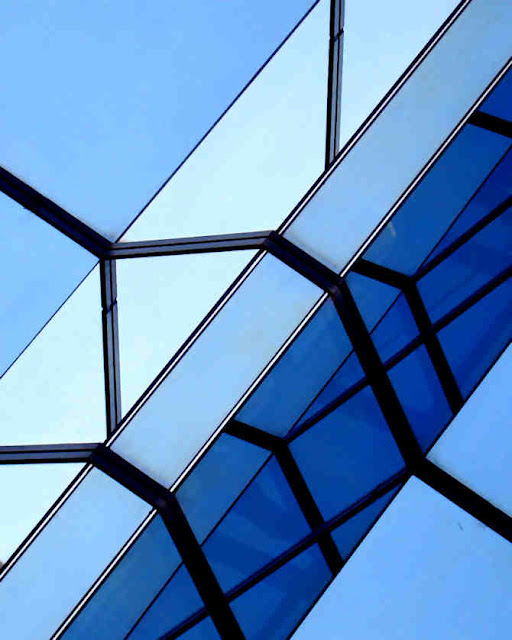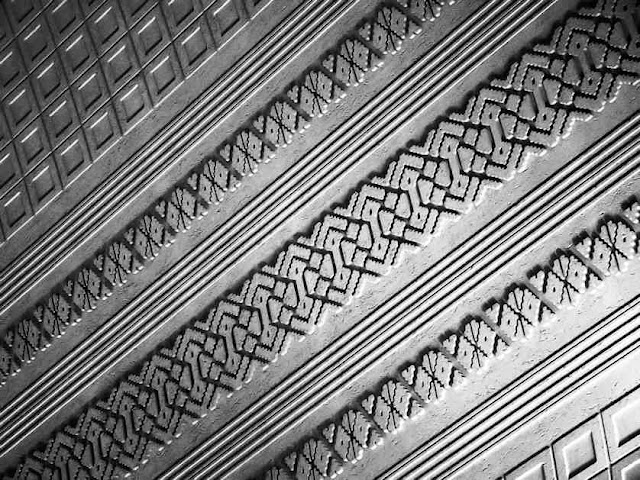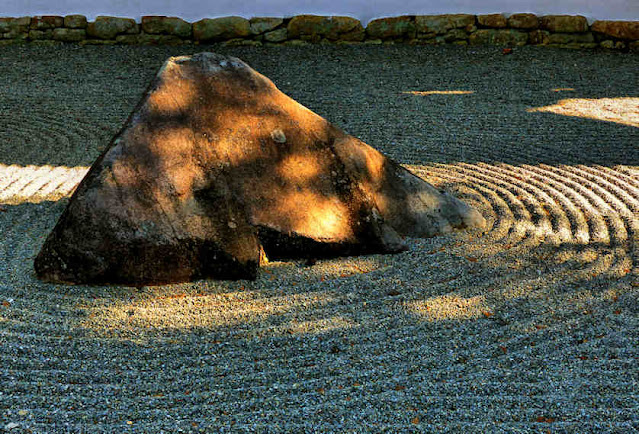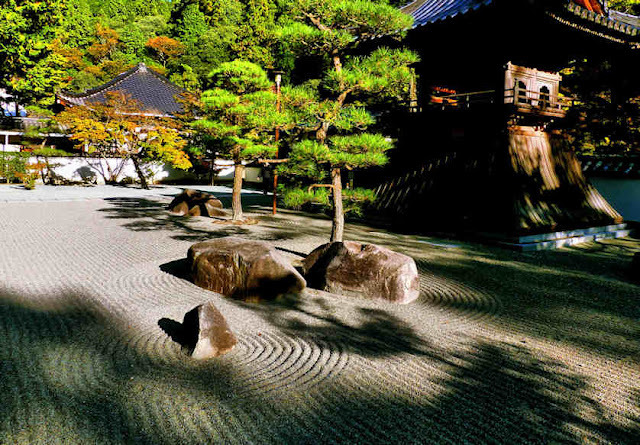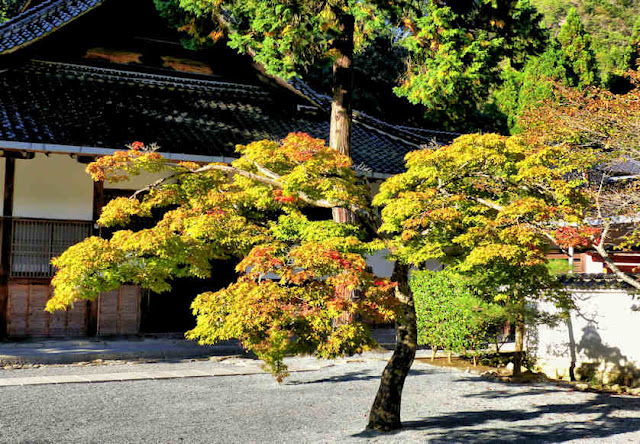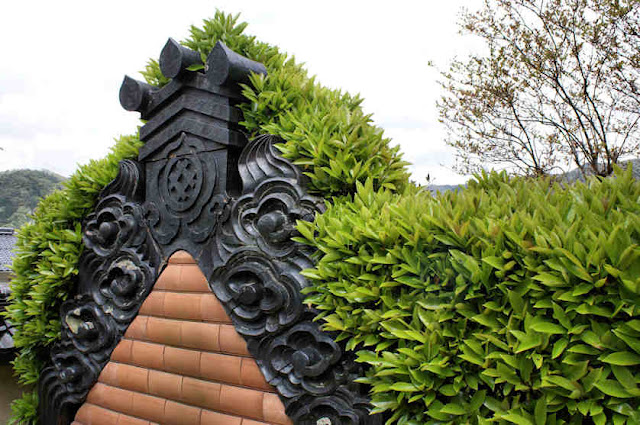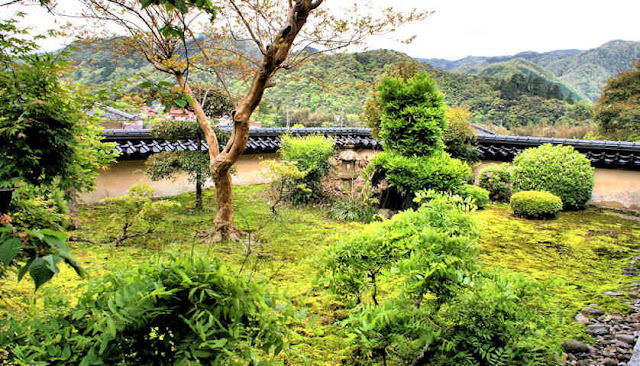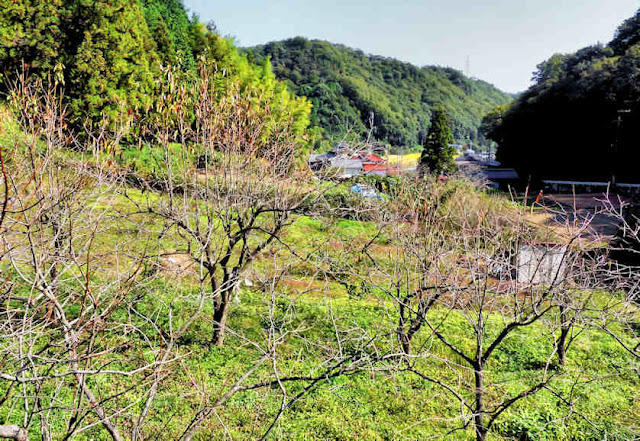Day 7 of my walk along the old Iwami Kannon Pilgrimage, and for the first time I have crossed into Hamada Domain from the Shogunate-cotrolled Ginzan Domain. During the Edo Period the old province of Iwami was basically divided by the Gonokawa River.
I'm heading up the Yato River and after leaving Oda there is a small tunnel through to Ichiyama, the next main settlement on this side of the river.
On the opposite bank is a huge Zelkova tree overhanging the river. This is a suijin altar, and in May during the Suijin Festival the priest will visit here and
the local people will leave a giant purification wand, an Onusa. In the old days they would have come here by boat but since the Yato River was dammed it is no longer navigable.
Ichiyama is named after the high point in the photo above. There are the ruins of a very small castle on the top.
The new road that bypasses the actual village is lined with azalea bushes which look great at this time of the year.
On the opposite bank this grove of riverside bamboo is a favorite gathering spot for all the local egrets in the evening as the sun sets and they settle in for the night as a flock.
And then Eno comes into view. It is not a large settlement, yet is home to two temples, one of which is the one I am to visit.
After crossing the river I look towards the mountains where I will be heading next.
For such a small hamlet, Fukuoji is quite a substantial temple, and I have been unable to find out why.
It is a Soto Zen temple, and I believe it was founded in the 14th century.
The local story is that the village headman found a statue of Kannon on a giant turtle in a pool in Senjokei, a gorge with many waterfalls a few k upstream from Eno.
He then established the temple and installed the statue as the honzon.
One day I may get around to asking a local historian about the temples history......








